Foods to help baby gain weight while breastfeeding
The Best Foods for Your Baby to Gain Weight
It’s hard to imagine that your little one could be any cuter — but you might be wondering whether they’re growing as fast as they should.
If you’re worried that your baby might weigh too little, bear in mind that newborns normally lose 3–7% (and up to 10%) of their birth weight in their first few days of life, which they regain by about the end of their second week (1, 2, 3).
Until they reach the 6-month mark, infants should gain about 1 pound (0.45 kg) or more each month. They should weigh about triple their birth weight around the end of their first year (1, 2, 3).
Keep in mind that these numbers are averages, and a healthy baby may have different weight gain numbers depending on their birth weight, rate of linear growth, and other factors.
You can ask your baby’s pediatrician about weight gain at any time, such as at their well-baby exam.
If you and your healthcare practitioner have ruled out medical reasons for your baby’s slow weight gain, such as heart or digestive issues, consider feeding them calorie-dense whole foods. These may encourage healthy weight gain (4).
Here are the 7 of the best foods to help your baby gain weight. We’ve grouped them below by age group.
A baby under 6 months that’s putting on less weight than average can be troubling. Since all or most of their calories at this point come from breastmilk, formula, or both, what you can control right now is how often they feed and whether they’re getting enough (4).
1. Breastmilk or infant formula — often and enough
Breastfed newborns will feed every 2–3 hours, so account for 8–12 or more feedings per day for the first 4 months.
Be sure to let your infant fully empty your breast. One reason this is recommended is because hindmilk, which comes out last during a feeding, may be richer than foremilk, which comes out first.
Let your baby feed fully, until your breast feels very soft. This will ensure they’re getting all the milk available, and it sends your body a message to make more.
You can try consuming foods that are thought to increase breastmilk production. These include lactation teas or bars with fenugreek, blessed thistle, or fennel. Oatmeal and dark beer may also help. Still, more research on these solutions is needed (5).
These include lactation teas or bars with fenugreek, blessed thistle, or fennel. Oatmeal and dark beer may also help. Still, more research on these solutions is needed (5).
Additionally, avoid wearing tight-fitting bras or tops.
Until your baby begins solid foods, they will not need to drink water. Offer them breastmilk or formula instead to maximize the number of calories you’re getting into their tiny tummies.
Your doctor may also ask about any latching issues and investigate any underlying medical issues that may affect your baby’s nutrient absorption or metabolism at this age.
Speak with a pediatrician for guidance if you’re considering whether to supplement breastfeeding with formula or wondering which formula to choose.
These choices are complicated and depend on many personal factors, and a doctor can help you make informed decisions. You may also consider talking with a lactation consultant.
Most babies will start to show readiness to eat solid foods around the 6-month mark.
Speak with your healthcare professional about when to start your baby on complementary solid foods.
2. Avocado
Whether you’re taking a baby-led weaning approach, a more traditional puréed foods style, or a combination of the two — avocado is a great transitional food for babies starting on solids.
What’s more, avocado’s healthy fats and relatively mild taste make this a great food for when you’re trying to get your baby to gain weight (6, 7).
Mash it up or serve it in thick spears. You can also add it to other foods, such as rice cereal or another fruit.
It’s a good idea to introduce new foods one at a time. This way, if your child has any sort of allergic reaction, you have a better sense of what might have caused it.
3. Oatmeal
Oatmeal cereal is another wonderfully rich food that’s easy to add to your baby’s diet.
To make it, blend plain oats cooked in water, adding water as needed to achieve a soupy texture. To make it heartier, cook and thin out the oatmeal with formula or breastmilk instead. Gradually thicken it as your baby gets more comfortable.
Gradually thicken it as your baby gets more comfortable.
Oatmeal packs lots of fiber, including beta glucan, which is one form of soluble dietary fiber. It promotes the growth of your baby’s beneficial gut bacteria and may encourage bacterial diversity in the gut (8).
What’s more, oatmeal is fairly neutral in taste, which makes it easy to combine with other hearty, healthy foods. For instance, you can spoon in puréed fruit and cinnamon for more flavor.
Avoid honey
Be sure to never feed a baby under 1-year-old honey, as doing so can put them at risk of botulism and pose a choking hazard (9).
4. Peanut butter
Peanut butter packs protein and fats — both of which can encourage weight gain in your baby.
Keep in mind that peanuts are one of the 8 allergens that can cause the most serious allergic reactions in the United States (10).
The latest evidence supports feeding infants as young as 6 months foods that commonly cause allergies. This includes peanuts. Research suggests this approach may actually help prevent allergies from developing (11, 12).
Research suggests this approach may actually help prevent allergies from developing (11, 12).
You’ll want to introduce allergenic foods methodically, always one at a time and introducing new, higher-risk foods at least a week apart.
It’s important to feed these to your baby on a regular basis — always watching for signs of allergies, including hives, redness around the mouth, or wheezing. If this occurs, seek medical help immediately (11, 12).
Never feed your baby peanut butter straight from the jar, as doing so may pose a choking hazard.
The best way to feed them natural peanut butter, or any other type of nut butter, is to blend them with either warm water, applesauce, breast milk or formula, or — if you’ve already introduced dairy — yogurt.
You can add it to oatmeal for added richness.
If your child is at a higher risk of allergies or has had eczema, speak with a healthcare professional before feeding them any nut butters or higher-risk foods.
They may advise waiting until they’re older and then want to supervise this in their office or suggest an allergy test first (13).
8 most common food allergies
- cow’s milk
- eggs
- fish
- crustacean shellfish, like shrimp
- wheat
- soy
- peanuts
- tree nuts
Learn more about food allergies here.
5. Eggs
Eggs are another powerhouse food that’s great for infants and adults alike. They provide a filling combination of fats and protein. They’re often gentle on the stomach, versatile, and easy to prepare (14,15).
Be mindful because this is another common allergenic food that you’ll want to introduce slowly and methodically. Keep an eye open for an allergic reaction. Seek immediate emergency care if your baby is wheezing or having trouble breathing (11, 12).
Once eggs are a mainstay in your baby’s diet, you could try scrambling them and sprinkling in some cheese and veggies for added nutrients.
You can also use eggs in other dishes. For example, try adding them to rice with cheese and veggies for some quick rice patties, then cut these into strips to serve.
You certainly don’t have to hold off until the 9-month mark to introduce fish, but it might be easier for babies to handle the texture at this age than earlier in life.
6. Fish
Fish delivers protein and healthy fats that are vital to your little one’s growth. Do be mindful to seek out low mercury fish, like salmon, herring, and trout (16).
Furthermore, these and other fish contain brain-nourishing docosahexaenoic acid (DHA), a type of omega-3 fatty acid that’s essential for proper brain development in early childhood (17).
Pair fish with a rich lemon full fat yogurt dip or marinara sauce for added nutrients.
It seems counterintuitive, but when babies hit their 12-month milestone, you may find they’re eating less.
This is because their growth rate slows. In fact, most toddlers will only put on about 5 pounds between their first and second birthday (18).
Of course, they’re still growing and needing lots of nourishment — they are simply not growing quite as rapidly as they were in those first 12 months of life.
So, don’t be worried if your champion eater suddenly slows down or plateaus at this phase. If they still have the energy to play and seem alert, they’re probably doing just fine.
7. Olive or avocado oils
Your toddler should get a fair amount of healthy fats. In fact, 30–40% of your toddler’s calories should come from fats (19).
They need roughly 1,000-1400 calories each day at this age, so that translates to about 30–50 grams of fat per day (19).
If your toddler needs a bit more support, consider adding a splash of olive oil or avocado oil to their food, about 1/4–1/2 tablespoon (4–7 mL) to start. You can add it into a bowl of soup or hummus or sop some whole grain bread into it.
Take care not to feed your baby too much oil, as doing so could cause gastric upset or diarrhea.
If your baby has energy to play and is tracking along with developmental milestones, they’re probably growing just fine.
Unless a healthcare professional has identified an issue with your baby’s weight, you probably don’t need to worry.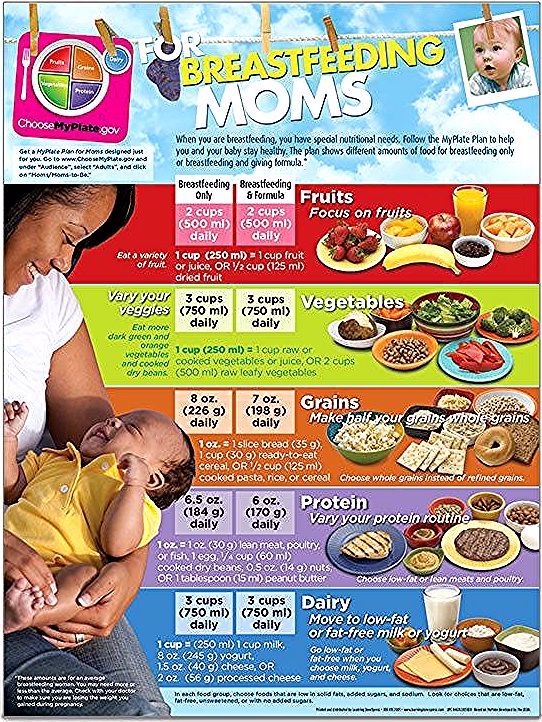
Keep in mind that babies born prematurely and those with special health needs may not track along with general growth charts.
That said, parental instinct is real. Always voice any concerns with your child’s healthcare professional. Take note of what exactly you observe that troubles you, in as much detail as possible.
For example, you could record the times, dates, and amounts and types of food your child has eaten.
If your baby seems lethargic, is refusing to feed, or isn’t meeting developmental milestones, you should make an appointment to speak with a healthcare professional, such as a pediatrician.
In addition to a medical evaluation, they may refer you to another specialist, lactation consultant, occupational therapist, or dietitian.
Your little one’s early nutrition can have lifelong impacts. Making sure they’re getting enough to eat — and growing enough — is a concern for many parents.
If your child is not tracking along or suddenly not feeding as well as they used to, speak with a healthcare professional to rule out any underlying causes.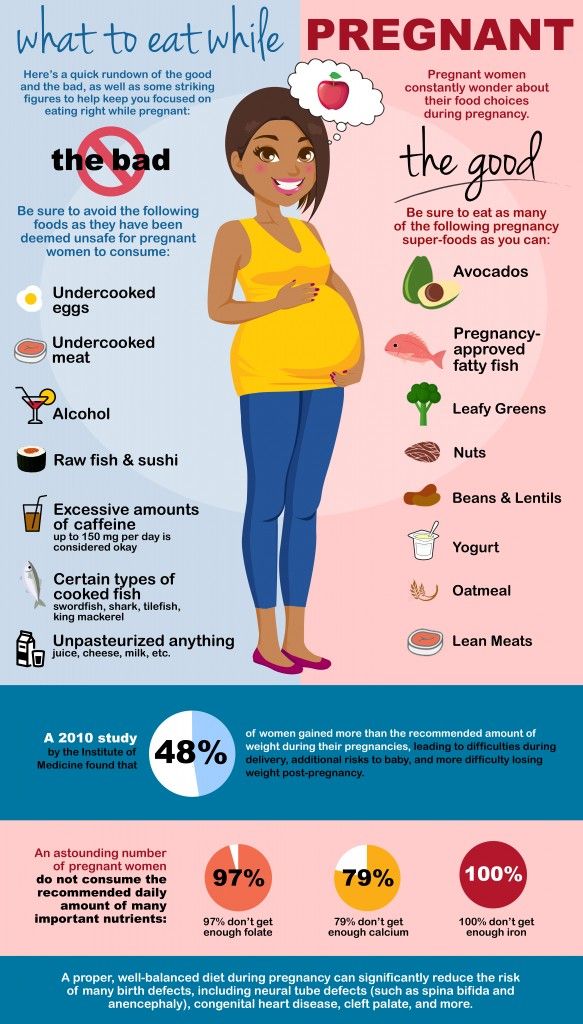 Do keep in mind that babies’ food intake normally slows at around the 12-month mark.
Do keep in mind that babies’ food intake normally slows at around the 12-month mark.
There are many wonderful, nourishing foods to help support your baby’s growth — including eggs, avocados, and peanut butter.
If they’re younger, or under 6 months, try to provide enough opportunities for them to breastfeed or drink enough formula according to their hunger cues.
All that said, if your little one seems alert, is meeting the developmental milestones for their age, and has enough energy to play, they’re probably getting enough to eat.
Just one thing
Try this today: The article 21 Homemade Baby Food Recipes is a great resource with tips on how to make a variety of tasty, nutritious meals for your baby once they start eating solid foods.
The Best Foods for Your Baby to Gain Weight
It’s hard to imagine that your little one could be any cuter — but you might be wondering whether they’re growing as fast as they should.
If you’re worried that your baby might weigh too little, bear in mind that newborns normally lose 3–7% (and up to 10%) of their birth weight in their first few days of life, which they regain by about the end of their second week (1, 2, 3).
Until they reach the 6-month mark, infants should gain about 1 pound (0.45 kg) or more each month. They should weigh about triple their birth weight around the end of their first year (1, 2, 3).
Keep in mind that these numbers are averages, and a healthy baby may have different weight gain numbers depending on their birth weight, rate of linear growth, and other factors.
You can ask your baby’s pediatrician about weight gain at any time, such as at their well-baby exam.
If you and your healthcare practitioner have ruled out medical reasons for your baby’s slow weight gain, such as heart or digestive issues, consider feeding them calorie-dense whole foods. These may encourage healthy weight gain (4).
Here are the 7 of the best foods to help your baby gain weight. We’ve grouped them below by age group.
A baby under 6 months that’s putting on less weight than average can be troubling. Since all or most of their calories at this point come from breastmilk, formula, or both, what you can control right now is how often they feed and whether they’re getting enough (4).
1. Breastmilk or infant formula — often and enough
Breastfed newborns will feed every 2–3 hours, so account for 8–12 or more feedings per day for the first 4 months.
Be sure to let your infant fully empty your breast. One reason this is recommended is because hindmilk, which comes out last during a feeding, may be richer than foremilk, which comes out first.
Let your baby feed fully, until your breast feels very soft. This will ensure they’re getting all the milk available, and it sends your body a message to make more.
You can try consuming foods that are thought to increase breastmilk production. These include lactation teas or bars with fenugreek, blessed thistle, or fennel. Oatmeal and dark beer may also help. Still, more research on these solutions is needed (5).
Additionally, avoid wearing tight-fitting bras or tops.
Until your baby begins solid foods, they will not need to drink water. Offer them breastmilk or formula instead to maximize the number of calories you’re getting into their tiny tummies.
Your doctor may also ask about any latching issues and investigate any underlying medical issues that may affect your baby’s nutrient absorption or metabolism at this age.
Speak with a pediatrician for guidance if you’re considering whether to supplement breastfeeding with formula or wondering which formula to choose.
These choices are complicated and depend on many personal factors, and a doctor can help you make informed decisions. You may also consider talking with a lactation consultant.
Most babies will start to show readiness to eat solid foods around the 6-month mark.
Speak with your healthcare professional about when to start your baby on complementary solid foods.
2. Avocado
Whether you’re taking a baby-led weaning approach, a more traditional puréed foods style, or a combination of the two — avocado is a great transitional food for babies starting on solids.
What’s more, avocado’s healthy fats and relatively mild taste make this a great food for when you’re trying to get your baby to gain weight (6, 7).
Mash it up or serve it in thick spears. You can also add it to other foods, such as rice cereal or another fruit.
It’s a good idea to introduce new foods one at a time. This way, if your child has any sort of allergic reaction, you have a better sense of what might have caused it.
3. Oatmeal
Oatmeal cereal is another wonderfully rich food that’s easy to add to your baby’s diet.
To make it, blend plain oats cooked in water, adding water as needed to achieve a soupy texture. To make it heartier, cook and thin out the oatmeal with formula or breastmilk instead. Gradually thicken it as your baby gets more comfortable.
Oatmeal packs lots of fiber, including beta glucan, which is one form of soluble dietary fiber. It promotes the growth of your baby’s beneficial gut bacteria and may encourage bacterial diversity in the gut (8).
What’s more, oatmeal is fairly neutral in taste, which makes it easy to combine with other hearty, healthy foods. For instance, you can spoon in puréed fruit and cinnamon for more flavor.
Avoid honey
Be sure to never feed a baby under 1-year-old honey, as doing so can put them at risk of botulism and pose a choking hazard (9).
4. Peanut butter
Peanut butter packs protein and fats — both of which can encourage weight gain in your baby.
Keep in mind that peanuts are one of the 8 allergens that can cause the most serious allergic reactions in the United States (10).
The latest evidence supports feeding infants as young as 6 months foods that commonly cause allergies. This includes peanuts. Research suggests this approach may actually help prevent allergies from developing (11, 12).
You’ll want to introduce allergenic foods methodically, always one at a time and introducing new, higher-risk foods at least a week apart.
It’s important to feed these to your baby on a regular basis — always watching for signs of allergies, including hives, redness around the mouth, or wheezing. If this occurs, seek medical help immediately (11, 12).
Never feed your baby peanut butter straight from the jar, as doing so may pose a choking hazard.
The best way to feed them natural peanut butter, or any other type of nut butter, is to blend them with either warm water, applesauce, breast milk or formula, or — if you’ve already introduced dairy — yogurt.
You can add it to oatmeal for added richness.
If your child is at a higher risk of allergies or has had eczema, speak with a healthcare professional before feeding them any nut butters or higher-risk foods.
They may advise waiting until they’re older and then want to supervise this in their office or suggest an allergy test first (13).
8 most common food allergies
- cow’s milk
- eggs
- fish
- crustacean shellfish, like shrimp
- wheat
- soy
- peanuts
- tree nuts
Learn more about food allergies here.
5. Eggs
Eggs are another powerhouse food that’s great for infants and adults alike. They provide a filling combination of fats and protein. They’re often gentle on the stomach, versatile, and easy to prepare (14,15).
They provide a filling combination of fats and protein. They’re often gentle on the stomach, versatile, and easy to prepare (14,15).
Be mindful because this is another common allergenic food that you’ll want to introduce slowly and methodically. Keep an eye open for an allergic reaction. Seek immediate emergency care if your baby is wheezing or having trouble breathing (11, 12).
Once eggs are a mainstay in your baby’s diet, you could try scrambling them and sprinkling in some cheese and veggies for added nutrients.
You can also use eggs in other dishes. For example, try adding them to rice with cheese and veggies for some quick rice patties, then cut these into strips to serve.
You certainly don’t have to hold off until the 9-month mark to introduce fish, but it might be easier for babies to handle the texture at this age than earlier in life.
6. Fish
Fish delivers protein and healthy fats that are vital to your little one’s growth. Do be mindful to seek out low mercury fish, like salmon, herring, and trout (16).
Furthermore, these and other fish contain brain-nourishing docosahexaenoic acid (DHA), a type of omega-3 fatty acid that’s essential for proper brain development in early childhood (17).
Pair fish with a rich lemon full fat yogurt dip or marinara sauce for added nutrients.
It seems counterintuitive, but when babies hit their 12-month milestone, you may find they’re eating less.
This is because their growth rate slows. In fact, most toddlers will only put on about 5 pounds between their first and second birthday (18).
Of course, they’re still growing and needing lots of nourishment — they are simply not growing quite as rapidly as they were in those first 12 months of life.
So, don’t be worried if your champion eater suddenly slows down or plateaus at this phase. If they still have the energy to play and seem alert, they’re probably doing just fine.
7. Olive or avocado oils
Your toddler should get a fair amount of healthy fats. In fact, 30–40% of your toddler’s calories should come from fats (19).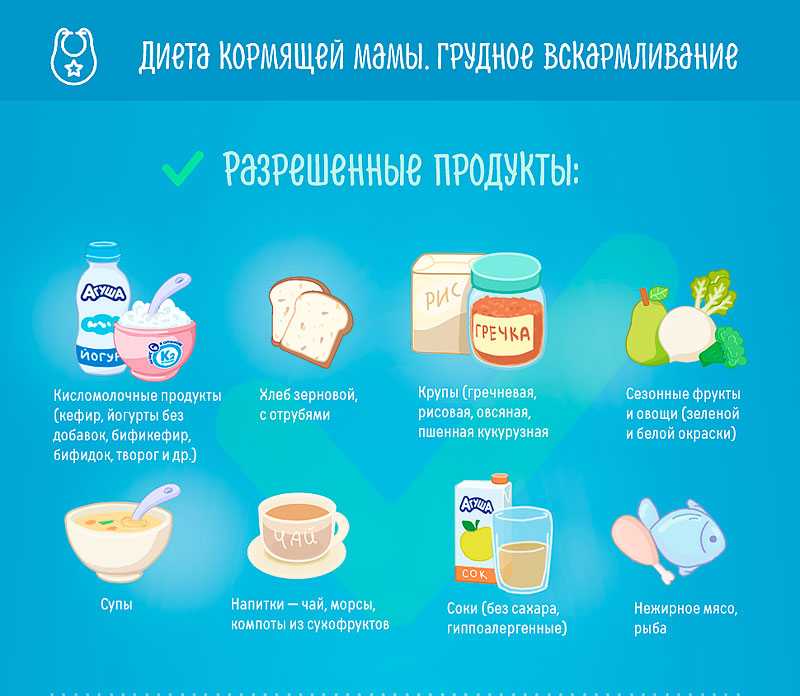
They need roughly 1,000-1400 calories each day at this age, so that translates to about 30–50 grams of fat per day (19).
If your toddler needs a bit more support, consider adding a splash of olive oil or avocado oil to their food, about 1/4–1/2 tablespoon (4–7 mL) to start. You can add it into a bowl of soup or hummus or sop some whole grain bread into it.
Take care not to feed your baby too much oil, as doing so could cause gastric upset or diarrhea.
If your baby has energy to play and is tracking along with developmental milestones, they’re probably growing just fine.
Unless a healthcare professional has identified an issue with your baby’s weight, you probably don’t need to worry.
Keep in mind that babies born prematurely and those with special health needs may not track along with general growth charts.
That said, parental instinct is real. Always voice any concerns with your child’s healthcare professional. Take note of what exactly you observe that troubles you, in as much detail as possible.
For example, you could record the times, dates, and amounts and types of food your child has eaten.
If your baby seems lethargic, is refusing to feed, or isn’t meeting developmental milestones, you should make an appointment to speak with a healthcare professional, such as a pediatrician.
In addition to a medical evaluation, they may refer you to another specialist, lactation consultant, occupational therapist, or dietitian.
Your little one’s early nutrition can have lifelong impacts. Making sure they’re getting enough to eat — and growing enough — is a concern for many parents.
If your child is not tracking along or suddenly not feeding as well as they used to, speak with a healthcare professional to rule out any underlying causes. Do keep in mind that babies’ food intake normally slows at around the 12-month mark.
There are many wonderful, nourishing foods to help support your baby’s growth — including eggs, avocados, and peanut butter.
If they’re younger, or under 6 months, try to provide enough opportunities for them to breastfeed or drink enough formula according to their hunger cues.
All that said, if your little one seems alert, is meeting the developmental milestones for their age, and has enough energy to play, they’re probably getting enough to eat.
Just one thing
Try this today: The article 21 Homemade Baby Food Recipes is a great resource with tips on how to make a variety of tasty, nutritious meals for your baby once they start eating solid foods.
Weight Gain Infant Formula: Helping Small Babies
09/23/2019 Reading time: 5 min 152324
nine0011 Contents of article- Why stable weight gain is important
- Causes of underweight
- Determination of the norm of weight
- How to determine the lack of weight
- What to do if you are underweight
- Weight Gain Infant Formula
- How to choose the right mix
- How long can I feed my baby with PRE-formula
- Which blend does Nutrilak offer? nine0032
- Genetic failures and pathologies.
 This category includes chromosomal abnormalities, constitutional abnormalities (for example, diathesis), fermentopathy (malabsorption syndrome, lactase deficiency, etc.), immunodeficiency, etc. All of these factors are endogenous and almost all are congenital. Also, children born with heart defects, deformation of the lips or jaw (cleft lip, cleft palate) can also have a weight deficit, as a result of which the child cannot fully suckle and, accordingly, eat. nine0015
This category includes chromosomal abnormalities, constitutional abnormalities (for example, diathesis), fermentopathy (malabsorption syndrome, lactase deficiency, etc.), immunodeficiency, etc. All of these factors are endogenous and almost all are congenital. Also, children born with heart defects, deformation of the lips or jaw (cleft lip, cleft palate) can also have a weight deficit, as a result of which the child cannot fully suckle and, accordingly, eat. nine0015 - Inadequate nutrition. It can be caused by constant underfeeding of the baby due to flat or inverted nipples on the mother's breast, which makes sucking difficult, as well as a small amount of milk, frequent regurgitation.
- Wrong mode. Long breaks between feedings can cause insufficient weight gain. Normally, a newborn baby is recommended to be fed every 2-3 hours if he is breastfed, and every 3 hours if he is formula fed. nine0015
- Digestive problems. Intestinal infections, dysbacteriosis, acute respiratory viral infections, and a number of other diseases can lead to disturbances in the functioning of the organs of the gastrointestinal tract.
 If the food is not digested completely, it is poorly absorbed, then the child's body ceases to receive vitamins and microelements necessary for normal life.
If the food is not digested completely, it is poorly absorbed, then the child's body ceases to receive vitamins and microelements necessary for normal life. - **E. Lisova "Doctor Komarovsky on the weight of a child"
- So, what are the basic principles of a healthy diet? Daily calorie content is about 2000 kcal, depending on physical activity. No more needed, tk. excess calories will be stored as excess weight. Less is also not necessary, tk. this will lead to a slowdown in metabolism and poor health for both mother and child.
- Eat often, about 5-6 times a day, avoiding the appearance of a strong feeling of hunger. It has been proven that a strong feeling of hunger leads to overeating, and therefore to the appearance of excess weight. nine0015
- Food should be satisfying. For example, meat with vegetables. Vegetables are a source of carbohydrates, which contribute to a quick feeling of satiety, because. fill the stomach. Meat is protein. It is absorbed longer than carbohydrates, which contributes to the long-term preservation of the feeling of satiety.
- Do not be distracted by anything while eating: do not watch TV, do not read a magazine, even if the baby is crying, try not to be distracted.
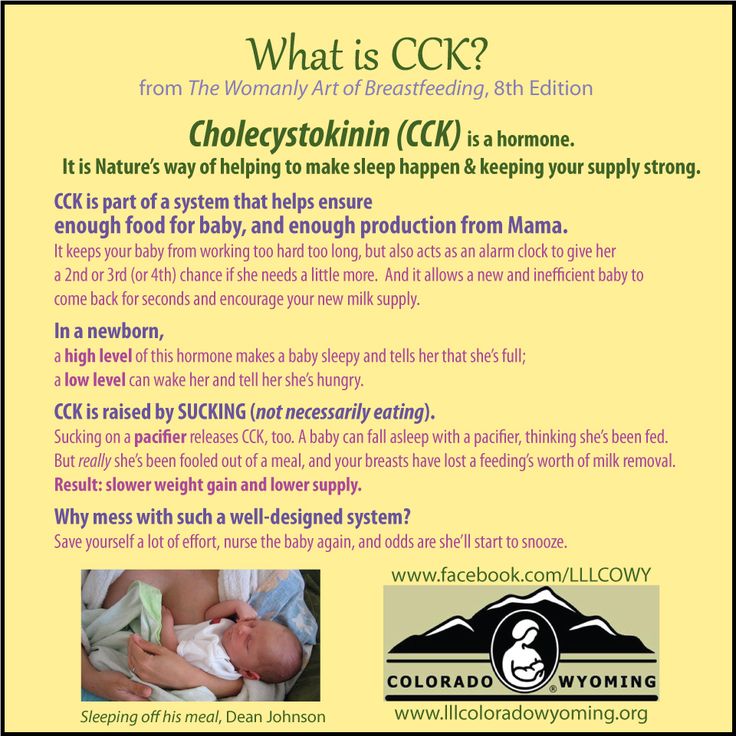 For 30 minutes that you eat nothing will happen, savor every bite. The process of eating should be treated very carefully. Eating on the run does not contribute to proper digestion or weight management. nine0015
For 30 minutes that you eat nothing will happen, savor every bite. The process of eating should be treated very carefully. Eating on the run does not contribute to proper digestion or weight management. nine0015
Lack of body weight appears due to various reasons, it can be congenital or acquired.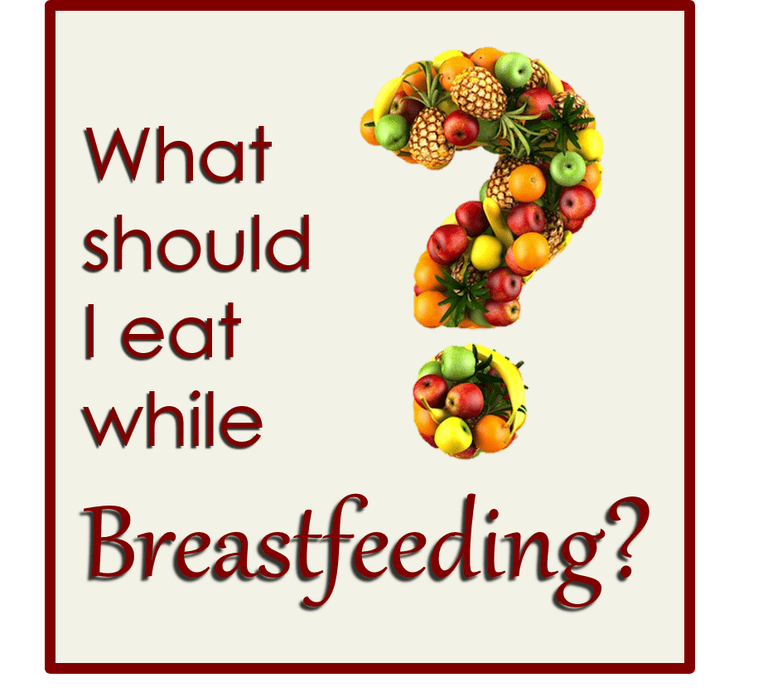 In order for the baby to gain the desired weight, it is necessary to adjust both the feeding regimen and the diet.
In order for the baby to gain the desired weight, it is necessary to adjust both the feeding regimen and the diet.
Why stable weight gain is important
Indicators of the length and body weight of the child at birth and in the future are one of the main parameters by which the state of health of the baby is assessed. WHO has established certain norms (averages) for monthly weight gain based on many factors and studies. Stable weight gain indicates normal growth and development of the baby, the correct formation of the digestive system, the timely production of enzymes in the intestines, good metabolism and absorption of food. A child is usually said to be underweight when their weight deviates by more than 10% compared to the age norm*. The disorder may be accompanied by a decrease in immunity, serious disturbances in metabolic processes, and a lag in speech and psychomotor development. nine0034
Causes of underweight
Determination of the norm of weight
Children are individual. This applies not only to appearance and character traits, but also to weight. Some babies are born large, and someone's body weight will be below average. All this is considered normal. nine0034
This is important!
The weight of a healthy full-term baby is usually in the range of 2.6 to 4 kilograms, but deviations from these values are allowed. Monthly weight gain is also labile and depends on many factors. Pediatricians and parents are guided by the average values of body weight gain.
Dr. Komarovsky recommends calculating the increase according to the following formulas:
It is important to note that a small increase in body weight that does not correspond to average norms or its absence at all is not a reason to immediately talk about pathological changes in the baby's body. For the most part, children grow in leaps and bounds and can gain a decent weight in one month, and in the next two add almost only in height. Also, a small increase may be due to the increased activity of the baby. If he learns to crawl or walk, moves a lot and expends energy, then the lack of mass becomes quite understandable. Thus, if the child is active, inquisitive, mobile, develops in accordance with age and has excellent tests, you should not worry**. But lethargy, apathy, pallor against the background of underweight - a reason for an immediate appeal to a specialist. Only he can make an accurate diagnosis. nine0034
For the most part, children grow in leaps and bounds and can gain a decent weight in one month, and in the next two add almost only in height. Also, a small increase may be due to the increased activity of the baby. If he learns to crawl or walk, moves a lot and expends energy, then the lack of mass becomes quite understandable. Thus, if the child is active, inquisitive, mobile, develops in accordance with age and has excellent tests, you should not worry**. But lethargy, apathy, pallor against the background of underweight - a reason for an immediate appeal to a specialist. Only he can make an accurate diagnosis. nine0034
What to do if you are underweight
Many parents today have special scales at home for weighing babies. Thanks to them, they can control the weight of the child. If for a long time the body weight of the crumbs does not change, you should contact a competent specialist, but in no case should you make diagnoses yourself. The doctor will conduct a professional examination, issue directions for the necessary examinations (if necessary) and give recommendations.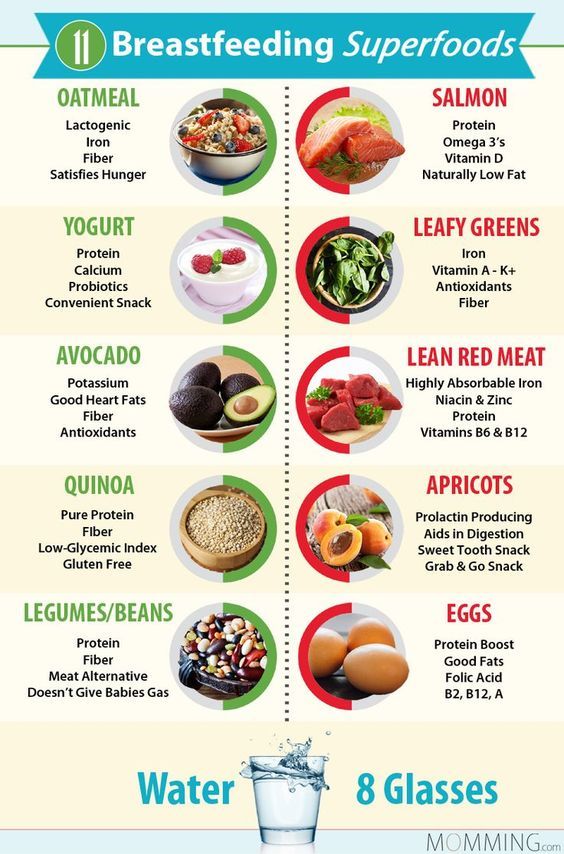 If the weight loss is minimal, it is usually necessary to adjust the diet and diet. In cases where a small increase is due to some disease (rotavirus infection, etc.), the doctor prescribes the appropriate treatment to eliminate the cause of underweight. nine0034
If the weight loss is minimal, it is usually necessary to adjust the diet and diet. In cases where a small increase is due to some disease (rotavirus infection, etc.), the doctor prescribes the appropriate treatment to eliminate the cause of underweight. nine0034
Weight gain infant formula
For small children who have problems with weight gain, special infant formulas may be recommended. Their composition takes into account the need of such babies for vitamins, minerals and other nutrients. They contain more proteins, fats and carbohydrates. The quality of the protein component is of great importance, and easily digestible whey proteins prevail over the casein fraction in them. To facilitate the absorption of the fat component, the diet includes medium chain triglycerides (MCT), which can be absorbed into the intestine without the participation of enzymes. And for the absorption of carbohydrates, part of the lactose can be replaced by maltodextrin. Weight gain formulas have the word or prefix "PRE" in the product name.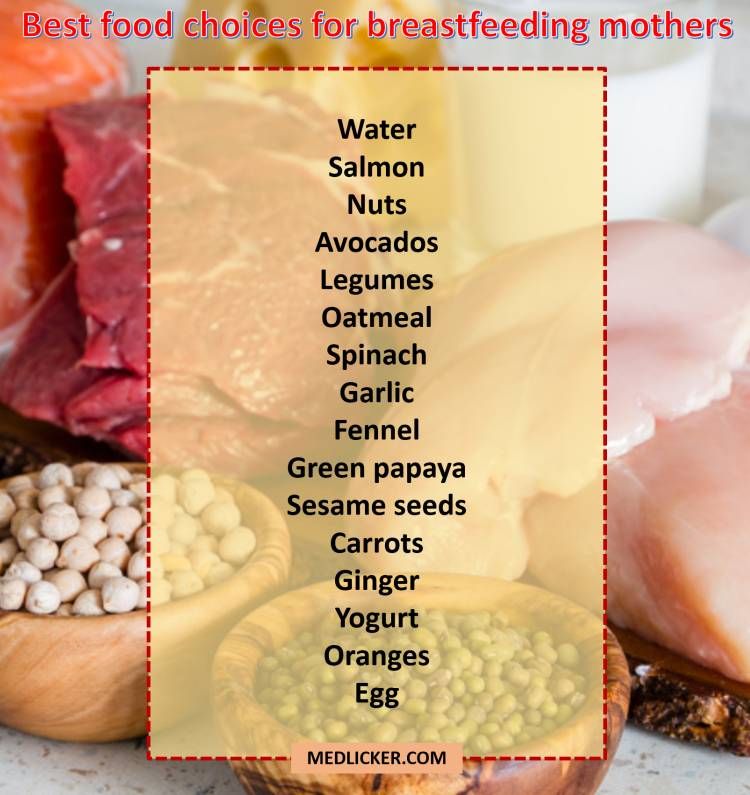 nine0010
nine0010
How to choose the right blend
This is important!
The decision to prescribe a specialized diet for an underweight baby should be made by a specialist. If a doctor recommends a PRE-mixture to a child, then attention should be paid to the fact that it additionally contains such useful components as omega-3 and omega-6 fatty acids for the development of the central nervous system, nucleotides for the formation and strengthening of immunity, prebiotics for improving digestion. nine0034
How long can I feed my baby with PRE-formula
Specialized nutrition can be used both in full and in partial (as supplementary feeding) volume. Formulas can be given from birth through the first year of life if needed. The duration of such nutrition depends on the deficit in body weight and the subsequent dynamics of weight gain. Once the baby's weight is normal, the PRE formula can be replaced with a standard formula suitable for the baby's age. nine0034
nine0034
Which blend does Nutrilak
offer?Nutrilak Premium PRE is a specialty formula for small and premature babies that has been clinically proven effective for underweight babies. The mixture contains all the necessary elements for the healthy growth of crumbs, as well as additional substances: prebiotics, omega-3 and omega-6 fatty acids, medium chain triglycerides.
(104 ratings; article rating 4.0)
How to lose weight while breastfeeding
How to lose weight while breastfeedingRemote consultations with a doctor are available in our center! DETAILS
8 812 380 02 38St. Petersburg
Make an appointment
Feeding a breastfeeding mother is a very important issue.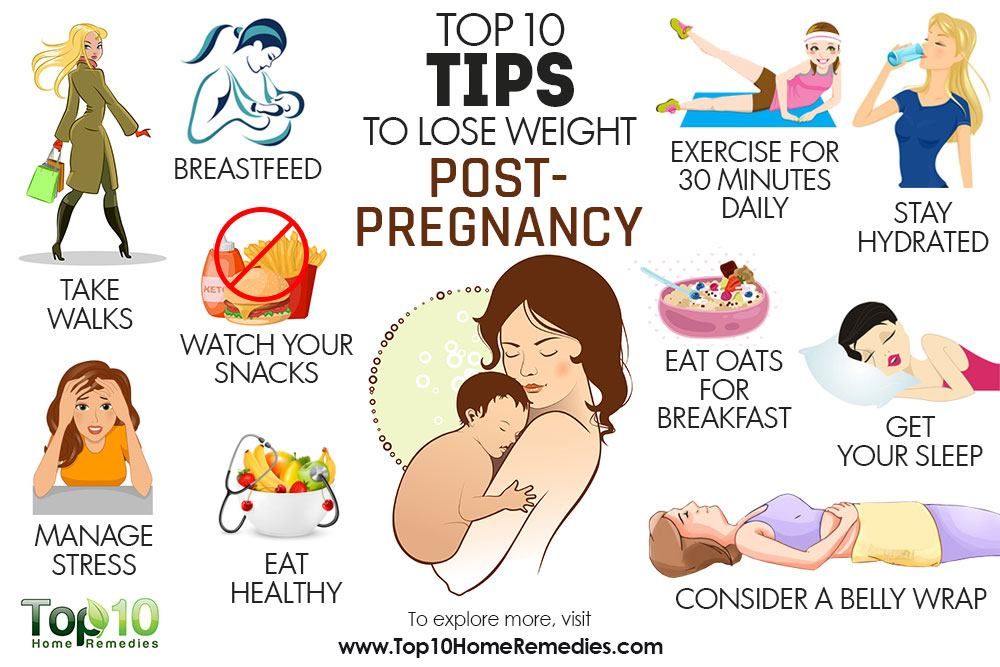 The health of the child, as well as the health and appearance of the mother, depend on a correct and balanced diet. In magazines and the Internet you can find a huge number of recommendations, but, unfortunately, many of them are far from the truth. For example, it is recommended to increase the daily caloric intake of a nursing woman to 3000 - 3500 kcal. For comparison: the daily calorie content of the diet of people engaged in heavy, manual, non-mechanized labor (manually drag bricks to the tenth floor all day) is 4000 kcal. Knowledge workers (an engineer who travels to and from work by public transport and walks at lunchtime), i.e. people with minimal physical activity should receive about 2000 kcal per day. No matter how much they write about how hard it is to be a mother, how much you need to do (wash, wash, iron), modern life is greatly facilitated by household appliances. If not every apartment still has a dishwasher, then everyone has a washing machine, and no one uses heavy cast-iron irons either.
The health of the child, as well as the health and appearance of the mother, depend on a correct and balanced diet. In magazines and the Internet you can find a huge number of recommendations, but, unfortunately, many of them are far from the truth. For example, it is recommended to increase the daily caloric intake of a nursing woman to 3000 - 3500 kcal. For comparison: the daily calorie content of the diet of people engaged in heavy, manual, non-mechanized labor (manually drag bricks to the tenth floor all day) is 4000 kcal. Knowledge workers (an engineer who travels to and from work by public transport and walks at lunchtime), i.e. people with minimal physical activity should receive about 2000 kcal per day. No matter how much they write about how hard it is to be a mother, how much you need to do (wash, wash, iron), modern life is greatly facilitated by household appliances. If not every apartment still has a dishwasher, then everyone has a washing machine, and no one uses heavy cast-iron irons either. So whatever one may say, a nursing mother is a woman with minimal physical activity. And an extra thousand calories will go not to increase the calorie content, fat content and nutritional value of milk, but to the mother’s hips and stomach. nine0010
So whatever one may say, a nursing mother is a woman with minimal physical activity. And an extra thousand calories will go not to increase the calorie content, fat content and nutritional value of milk, but to the mother’s hips and stomach. nine0010
A large number of studies have been carried out, according to which it has been established that women living in a wide variety of conditions (favorable and not very favorable) can fully lactate. Women in primitive cultures, on a very modest diet, produce milk in sufficient quantity and proper quality to feed their child. Lack of nutrition does not affect the quality of milk. An increase in the calorie content of the daily diet also does not lead to changes in the composition of breast milk. nine0010
Most women are concerned about keeping their figure after having a baby.
During pregnancy, a woman's body stores fat. Therefore, the weight after the birth of a child is somewhat greater than before. These fat reserves are necessary for the body to maintain strength in case of real hunger.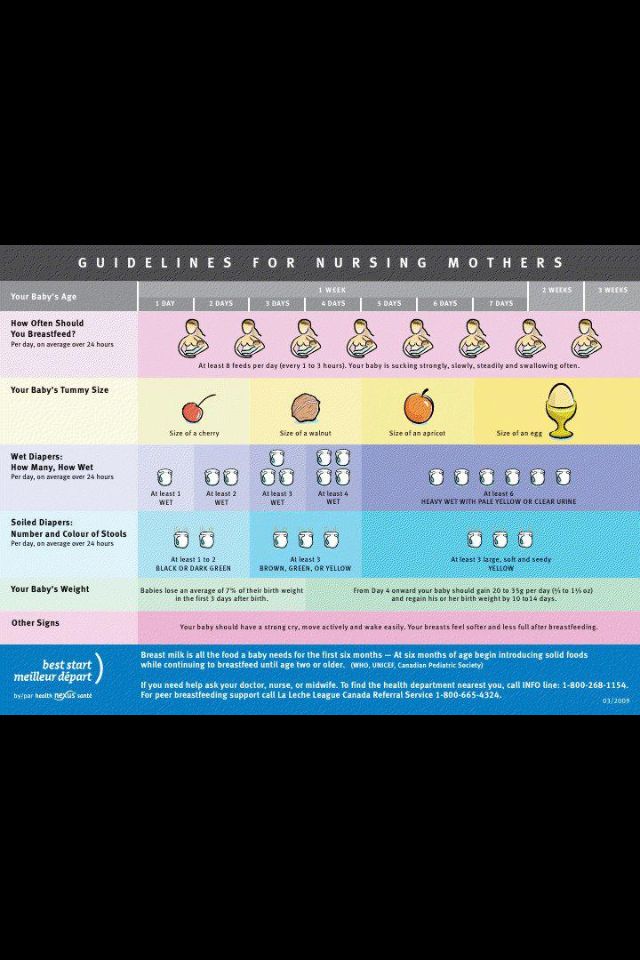 After all, nature must make sure that all the cubs survive. And it is during the period of breastfeeding that these fat reserves begin to be consumed. Therefore, if a woman after the birth of a child eats properly and in a balanced way, then by the end of the breastfeeding period (in 1.5 - 2 years), her weight will return to its previous indicators. nine0010
After all, nature must make sure that all the cubs survive. And it is during the period of breastfeeding that these fat reserves begin to be consumed. Therefore, if a woman after the birth of a child eats properly and in a balanced way, then by the end of the breastfeeding period (in 1.5 - 2 years), her weight will return to its previous indicators. nine0010
Once again, there is no need to follow any special diets either for weight loss or to increase the fat content of breast milk (yogurt 9% fat and 35% sour cream will not affect the fat content of milk, but will affect your thighs).
The main task of a mother in the struggle for the harmony of her figure is to try not to increase her weight after the birth of a child. And in this she will be helped by the well-known principles of a healthy and rational diet.
The daily caloric intake should correspond to the woman's physical activity. If she works in the field for agricultural work - the calorie content is higher, if she sits at home and walks at a slow pace with a stroller in the park - the calorie content is much lower.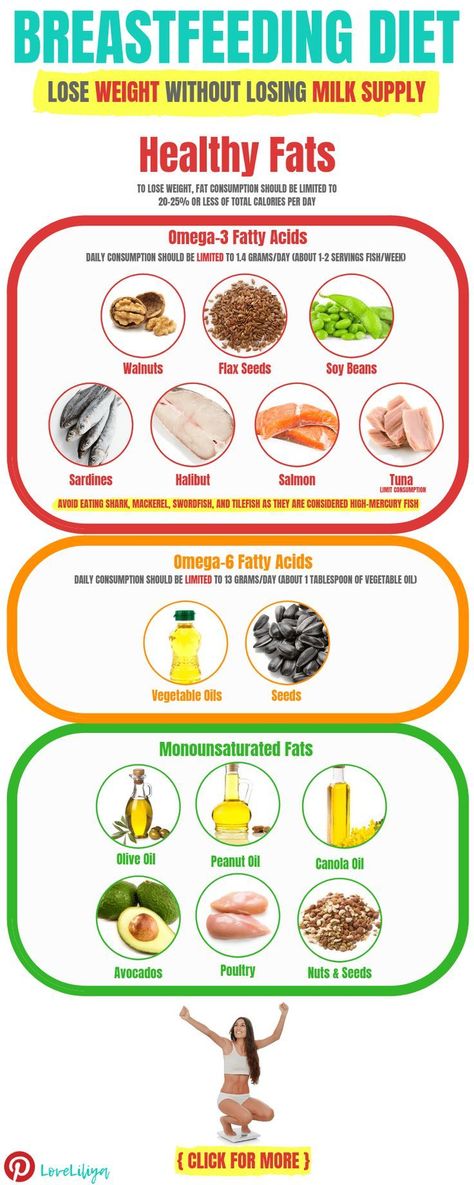 nine0010
nine0010
When choosing food for yourself, it is important to remember that the main task of food is to maintain energy and saturate the body with all the necessary nutrients: vitamins, minerals, microelements.
The basis of the diet, oddly enough, is carbohydrates. You get them from grain products and vegetables. They are the best sources of fiber, B vitamins, trace elements. The most useful grain products are wild and brown rice, pearl barley, oatmeal, buckwheat and millet, wholemeal pasta, cereal bread. It is advisable to eat 10 servings of grain products per day. One serving is ½ cup of porridge or pasta or 1 slice of whole grain bread. nine0010
Vegetables and fruits - any. 10-13 servings per day. One serving: 1 cup fresh herbs, ½ cup vegetables, 1 banana or apple or orange, ½ cup canned fruit.
Proteins are fish, meat, poultry, eggs, dairy products (kefir, cottage cheese). Fish is a source of heart-healthy fatty acids, as well as calcium and phosphorus, necessary for strong bones. The need for fish is 2-3 servings per week. One serving is a piece the size of a palm without fingers. Meat is a source of trace elements. These are low-fat varieties of beef, pork, rabbit. The need is 4-5 servings per week. The portion size is the same. Dairy products are a source of calcium, the norm is 2 servings per day. One serving is one glass. (And another essential serving of calcium per day is 1 cup of spinach or broccoli.) nine0010
Fats are found in butter (animal fat) and vegetable (vegetable fat) oils. And the share of animal fats should account for only 10%. This means that food should be cooked mainly using vegetable oil.
In addition to the composition of the products, great importance is attached to the method of cooking.
For example, raw vegetables and fruits retain more vitamins and minerals.
Meat, fish, poultry, it is better to boil or bake in the oven, which allows you to reduce the calorie content of the finished dish, because. no oil is added. nine0010
Keep in mind that drinks such as juices contain a lot of extra calories and very little fiber and vitamins. Therefore, to compensate for the deficiency of vitamins and fiber, it is better to eat an apple. And to quench your thirst, use drinking water. The amount of liquid in the diet of a nursing mother is about 2 - 2.5 liters per day. It is considered that soups and fruits are 100% liquid.
As for “empty” foods that contain neither fiber, nor vitamins, nor microelements, but only extra calories, these are a wide variety of rich products: cookies, crackers, dryers, cakes, cakes, ice cream. Since, after the birth of a child, a mother constantly wants to eat, and there is not enough time to prepare a full meal, she begins to absorb cookies in unlimited quantities. And the weight, of course, increases. I'm not talking about the fact that the cause of colic and flatulence in a small child is very often the excessive consumption of "empty" carbohydrates by the mother. nine0010
nine0010
And a little more about calories. Everyone talks about them, but no one knows what they look like. So, 100 kcal are contained in 1 banana, or 8 tablespoons of cooked beans, or 1.3 cookies, or 2 medium apples, or 340 ml of light beer, or 1/5 of a big mac, or 1/12 of a medium pizza with meat, or 4 slices of french fries, or 1/5 pita bread, or 2 gin tonics, or 17 peanuts, or 300 ml of milk, or 9 chips. Calculate what you have and how much.
This article is about a healthy mother and a healthy baby. Naturally, if the baby has some kind of disease, for example, allergic dermatitis, then the mother's nutrition will be adjusted. But this correction will affect mainly the diversity of products within the same group. For example, if a child is allergic to fish, then there is no need to exclude beef. If there is a reaction to millet, then barley can be eaten. Your pediatrician will help you with this. nine0010
Do not forget that in the fight against excess weight, not only nutrition is important, but also physical activity.










